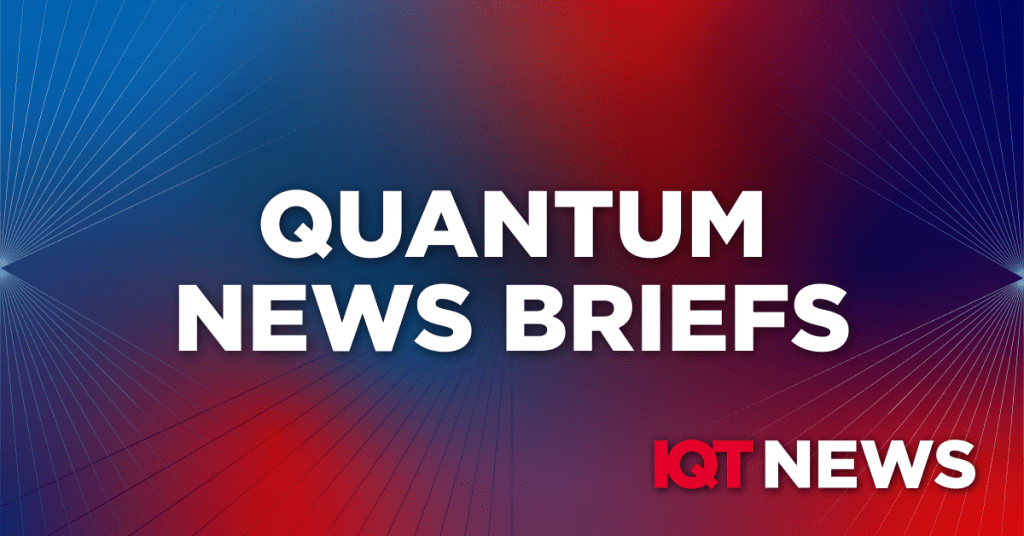Quantum News Briefs: May 8, 2024: Press release summaries below:
QANplatform Launches its Multi-Language, Quantum-Resistant Testnet
QANplatform has launched the world’s first quantum-resistant and Ethereum-compatible blockchain testnet, which allows developers to write smart contracts in any programming language. This new platform, enabled by the QAN Virtual Machine (QVM), marks a significant advancement in the Web3 ecosystem by combining quantum-resistant security, Ethereum’s EVM compatibility, and versatile programming capabilities. The testnet’s introduction follows QANplatform’s deployment of its quantum-resistant technology in a European Union member state and builds on the earlier launch of the QAN Private Blockchain in September 2023. This innovative approach enhances security against potential quantum computing threats with the CRYSTALS-Dilithium algorithm. It aims to significantly expand the developer base by supporting a wide range of programming languages and offering a no-code smart contract studio for easier access and interaction.
University of Melbourne Researchers Create super-pure silicon chip for quantum computers
Researchers from the Universities of Melbourne and Manchester have developed a new technique that significantly purifies silicon, enhancing the prospects of scalable, high-performance quantum computing. The technique involves embedding phosphorous atoms into pure silicon crystals, creating a stable environment that extends the quantum coherence necessary for computing. This innovation, detailed in the journal Communications Materials, allows for constructing high-quality qubit devices, which is crucial for scalable quantum computers. By achieving silicon purification to unprecedented levels, the technique utilizes commonly available semiconductor fabrication tools, simplifying the manufacturing process. This advancement holds promise for revolutionizing fields such as artificial intelligence, secure data management, and drug design, moving us closer to harnessing the transformative potential of quantum computing.
GIST Researchers Develop Nanotechnology for Creating Wafer-Scale Nanoparticle Monolayers in Seconds
Researchers from the Gwangju Institute of Science and Technology (GIST) in South Korea have developed a rapid and efficient nature-inspired method for assembling monolayers of nanoparticles, paving the way for mass production of nano-engineered materials. Their breakthrough technique, inspired by the underwater adhesion processes of mussels, transfers nanoparticles to large surfaces like 2-inch wafers in just 10 seconds, achieving exceptional surface coverage. This “one-shot” self-limiting assembly process, detailed in Advanced Materials, significantly outpaces traditional methods by utilizing electrostatic forces enhanced by proton dynamics, which facilitate nanoparticle uniform and swift attachment. This innovation holds promise for advancing applications in photonic and electronic devices and energy and environmental technologies by enabling the mass production of functional nanoparticle monolayers.
In Other News: Investor Place article: “The 3 Most Undervalued Quantum Computing Stocks to Buy in May 2024”
Quantum computing is rapidly evolving, with key players like IBM, Alphabet, and Honeywell leading the charge, a recent Investor Place article highlights. IBM has advanced its quantum capabilities with the Condor processor, featuring 1,121 qubits, marking a significant industry milestone. Through its Google Cloud services, Alphabet is leveraging its Sycamore quantum computer to explore practical quantum applications, potentially revolutionizing how quantum computing is accessed and utilized. Meanwhile, Honeywell’s investment in Quantinuum, a merger with Cambridge Quantum, has solidified its position in the industry, valuing the venture at $5 billion. These developments underscore the potential of quantum computing to surpass conventional computing in solving complex problems like financial modeling and climate forecasting. However, widespread application remains on the horizon due to current technological and economic challenges.
